Travel to the Blue Mountains
Many of us today know the Blue Mountains as a popular day-trip destination from Sydney where you can marvel at the scenery, go shopping, grab a cup of coffee in one of the 26 little towns scattered along the Great Western Highway, or do something more physical like mountain biking, rock climbing or bush walking.
For many years though, travel through the Blue Mountains was difficult. Cox’s Road to Bathurst was little more than a dirt track and it took at least two days for a horse and carriage to make the trip, with an overnight stop at one of the many inns that were slowly springing up along the road. (1) The discovery of payable gold at Ophir in 1851 led to rising numbers of travellers on the road and the need for a railway was fast becoming evident.
The railway arrives, 1867
While the railway had arrived at Penrith in 1862 the Blue Mountains, once again, seemed like an impassable obstacle:
when the question of railway extension had to be considered, grave doubts generally existed as to the possibility of getting a railway across the mountains at all, except at a prohibitive cost.
NRS 17514/1/1[3] p.6
By mid-1867 the railway had been extended from Penrith to Wentworth Falls (passengers continuing westwards had to transfer to coaches to complete their journey). When the first excursion train left Penrith for Wentworth Falls on 11 July 1867 stations had been built at Watertank (Glenbrook), Wascoe’s (Blaxland), Springwood, Buss’s (Woodford) and Blue Mountains (Lawson). (2)
Zig Zag railway
The task of building the Main Western Line had fallen to John Whitton, Engineer-in-Chief for Railways NSW. Whitton had to design and construct the railway to cope with gradients as steep as 1 in 33 (3%) and curves as sharp as 8 chains (160m). (3)
To overcome the steep gradients of the mountains, he utilised zig zags at Lapstone (the Lapstone or Little Zig Zag) and Lithgow (the Great or Lithgow Zig Zag). The zig zags were used instead of tunnels due to budget restraints, a decision which allowed passengers to experience:
the rugged grandeur of the scenery, and the engineering skill and pluck displayed in designing and constructing these great works …. From the Clarence tunnel to the bottom of the Valley, there is a descent of 470ft., through a deep and rocky ravine, where formerly there was scant footing for the mountain goat, and where the surveyors had occasionally to be suspended by ropes in the performance of their perilous duties.
NRS 17514/1/1[3], p.11
The zig zags were a feature of the Great Western Line until the Lapstone Zig Zag was bypassed by the Glenbrook Tunnel in 1892 and the Great Zig Zag was bypassed with the Ten Tunnels Deviation in 1910. Whitton also designed the Victoria Bridge over the Nepean River between Penrith and Emu Plains and the Knapsack Gully Viaduct.
Rail line extended to Bathurst, 1876
By February 1875 the line had reached Kelso and once the bridge over the Macquarie River was completed the railways arrived in Bathurst in April 1876. The arrival of the railways ushered in a new period of settlement and tourism for the Blue Mountains.
Blue Mountains: Holiday-makers and honeymooners
The arrival of the Great Western Line through the Blue Mountains saw a period of rapid growth for the 26 towns along the railway.
More and more people settled in the Mountains as land and jobs became available. Country residences and retreats also became a popular option for some the more wealthy and prominent citizens:
- Sir Henry Parkes purchased land and built a residence called “Faulconbridge House” in the 1870s. The town of Faulconbridge took its name from his home.
- Sir Frederick Darley, Lt-Gov of NSW, bought land at Katoomba in 1888 and built a summer residence, Lilianfels.
The railways also meant that Sydney-siders, with more leisure time and money, could visit the Blue Mountains for a day-trip or holiday.
The early 1900s to the late 1920s can be considered as a boom time for holiday makers to the Blue Mountains. Along with guest houses and holiday cottages, hotels such as the Carrington in Katoomba (opened in 1882) and the Hydro Majestic in Medlow Bath (opened in 1904) flourished.
(1) http://www.nationaltrust.com.au/ida/link_d1_triptosydney.html
(2) NRS 17514/1/2[47] p.45
(3) http://en.wikipedia.org/wiki/Blue_Mountains_railway_line
References:
John Low, Pictorial Memories Blue Mountains, Kingsclear Books, 1991
NRS 17514/1/2[47] The Railways of NSW 1855-1955
NRS 17514/1/1[3] Thirty-five years on the New South Wales Railways: The Work of the late Mr. John Whitton, C.E., 1898
Research by
Suzanne Upton, Archivist Public Access

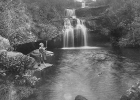
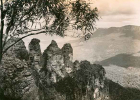

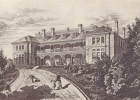
![Soldiers Gap on the newly completed section of highway at Mt Victoria, no date. NRS 4481 [Glass negative box 141]](/wp-content/uploads/2013/04/4481glassnegbox-141_2041_aa.jpg)
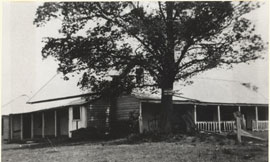

![John Whitton, Engineer in Chief for the Railways. NRS 4481 [4/8652 glass negative 1363]](/wp-content/gallery/toot-toot-the-great-western-railway-arrives/4-8652_image1363_a.jpg)

![Sketch of a Blue Mountains home, 1879. NRS 16407/1/[1]p.21](/wp-content/uploads/2013/04/nrs16407-1-11_p21_aa.jpg)

![Land for sale at Blaxland, 1960. NRS 9149 [10/217] Poster in volume](/wp-content/uploads/2013/04/nrs914910-217_blaxland-post.jpg)
![Sale of Crown Lands at Lawson, January 1888. NRS 9149 [10/217]](/wp-content/uploads/2013/04/nrs914910-217_lawson-14-jan.jpg)
![Railway Guide to Katoomba, 1897. NRS 16407/1/1[10]](/wp-content/uploads/2013/04/nrs16407-1-110_railway-guid.jpg)
![One day walking tours between Emu Plains and Wentworth Fall, 1938. NRS 16407/1/2[27]](/wp-content/uploads/2013/04/nrs16407-1-227_walking-tour.jpg)
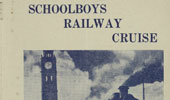

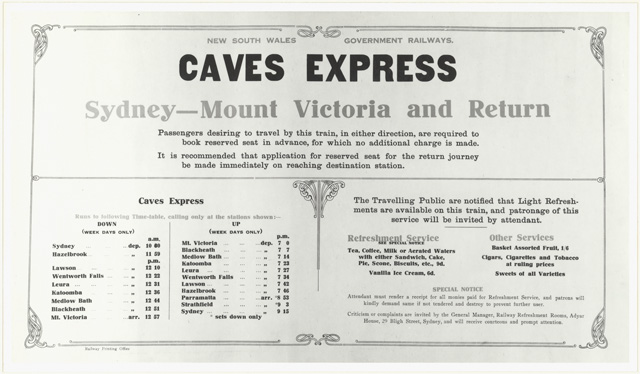
![Advertisement for the Caves Express. NRS 16407/1/2[30] Cover for Atop of the Blue Mountains by Caves Express (Fourth Edition)](/wp-content/uploads/2013/04/nrs16407-1-230_caves-expres.jpg)
![A cave picnic in the Blue Mountains, no date. NRS 4481 [4/8676 glass negative 1853]](/wp-content/uploads/2013/04/4-8676_image1853_aa.jpg)
![Advertisement for the Carrington Hotel, 1898. NRS 16407/1/1[11]](/wp-content/uploads/2013/04/nrs16407-1-111_carrington-h.jpg)
![List of Hotels and Boarding Houses in Katoomba, 1898. NRS 16407/1/1[11] p.34](/wp-content/uploads/2013/04/nrs16407-1-111_p34-35_a.jpg)